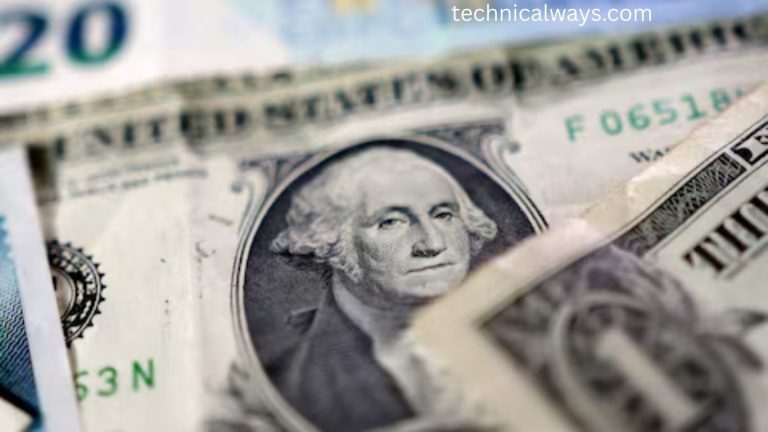The U.S. dollar weakened against the euro and Swiss franc on Friday, heading for a 2% decline in August against a basket of major currencies. Traders are preparing for a widely expected interest rate cut by the Federal Reserve in September.
Initially, the dollar rose after U.S. inflation data met expectations. However, it later lost ground, failing to break a three-day losing streak.
The U.S. Commerce Department reported that the Personal Consumption Expenditures (PCE) Price Index rose 0.2% in July, following an unrevised 0.3% increase in June. This keeps the Fed on track for a rate cut at its September 16–17 meeting. Money markets now price in an 87% probability of easing, up from 63% a month earlier, according to CME’s FedWatch tool.
The dollar index, which measures the greenback against a basket of currencies, fell 0.09% to 97.803 in afternoon trading. “FX markets remain range-bound as investors await the next U.S. labor market report on September 5th,” said Dan Tobon, head of G10 FX strategy at Citi.
Weak Consumer Sentiment and Market Uncertainty
Investor caution persists as weak consumer confidence continues to affect the market. Investors are rebalancing and hedging portfolios after strong U.S. equity performance throughout August, explained Uto Shinohara, senior investment strategist at Mesirow Currency Management.
Adding to uncertainty, U.S. President Donald Trump’s efforts to influence monetary policy have weighed on the dollar. This week, Trump attempted to remove Fed Governor Lisa Cook. A federal judge announced an expedited briefing schedule as Cook seeks to block her dismissal, arguing the president lacks valid grounds. “Market instability remains in focus, further fueled by media coverage surrounding Fed Governor Cook’s hearing,” Shinohara noted.
Fed Officials Signal Rate Cuts
Trump has repeatedly criticized the Federal Reserve and Chair Jerome Powell for not cutting interest rates. Meanwhile, Fed Governor Christopher Waller, a potential successor to Powell, indicated readiness for rate reductions next month. Waller expects additional cuts to bring policy rates closer to a neutral setting.
Citi’s Tobon added, “The FX reaction to Fed developments appears muted, potentially due to illiquid summer markets or because the market has already priced in the expected rate cut cycle. Going forward, data will drive the reaction.”
Euro Zone Inflation Remains Steady
Across Europe, euro zone consumers kept inflation expectations stable at or above the European Central Bank’s 2% target in July, according to a recent ECB survey.
Additional data showed French consumer prices rose slightly less than expected in August, while Spain’s EU-harmonized 12-month inflation rate remained steady at 2.7%. The euro gained 0.11% to $1.1696, and sterling remained flat at $1.3502, though both currencies advanced more than 2% for the month.
Against the yen, the dollar edged up 0.02% to 146.985, but it fell 2.5% for August. Against the Swiss franc, the dollar weakened 0.26% to 0.7997, marking a 1.3% monthly loss.
Global Currency Movements
Other currencies experienced mixed trends. The New Zealand dollar strengthened slightly after Reserve Bank of New Zealand Chairman Neil Quigley resigned, following earlier turbulence with the central bank’s governor.
China’s yuan reached its strongest level against the dollar in ten months, supported by steady central bank fixings and a strong domestic stock market. Meanwhile, the Indian rupee fell to a record low, pressured by concerns over U.S. tariffs on Indian imports.
Market Outlook
Investors are closely watching upcoming U.S. economic data, particularly labor market reports, for clues about the Fed’s next moves. With inflation showing moderation and rate cuts widely expected, the dollar may continue its downward trajectory.
Global currencies such as the euro, Swiss franc, and yuan are poised to benefit from the greenback’s weakness. Analysts advise remaining vigilant, balancing risk amid ongoing uncertainty in U.S. and international financial markets.
As the Fed prepares for its September meeting, economic indicators, monetary policy guidance, and geopolitical developments will remain key drivers of currency valuations and investor sentiment.
Frequently Asked Questions:
Why is the U.S. dollar weakening?
The dollar is losing ground as traders anticipate an interest rate cut by the Federal Reserve. Lower interest rates typically reduce demand for a currency, causing it to weaken against other major currencies.
How much has the dollar fallen recently?
In August, the dollar is on course for a 2% decline against a basket of major currencies, including the euro, Swiss franc, and yen.
What economic data influenced the dollar’s movement?
The Personal Consumption Expenditures (PCE) Price Index rose 0.2% in July, aligning with expectations. This data supports the Fed’s likelihood of reducing interest rates to maintain economic growth.
How does the Fed’s expected rate cut impact the dollar?
A rate cut makes U.S. assets less attractive to investors, lowering demand for the dollar and prompting it to fall against stronger foreign currencies.
Which currencies have gained against the dollar?
The euro and Swiss franc have strengthened over 2% for the month. China’s yuan also reached a 10-month high, while the Indian rupee fell to a record low due to U.S. tariffs.
How are U.S. political developments affecting the dollar?
President Trump’s attempt to remove Fed Governor Lisa Cook has added uncertainty. Political interference in the Fed can impact market confidence and currency stability.
What should investors watch next?
Investors are monitoring upcoming U.S. labor market reports and economic indicators. These data points will influence expectations for future Fed rate cuts and guide currency movements.
Conclusion
The U.S. dollar faces mounting pressure as markets price in an imminent Federal Reserve rate cut. Weak consumer sentiment, political uncertainty, and steady inflation data have combined to push the dollar lower against major currencies like the euro, Swiss franc, and yuan. With upcoming economic reports and Fed decisions on the horizon, investors remain cautious, balancing portfolios and hedging risks. As the greenback slides, global currencies are poised to capitalize on its weakness, highlighting the interconnected nature of monetary policy, geopolitical developments, and market sentiment.

